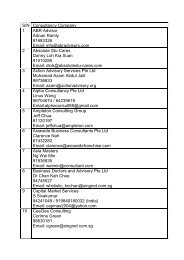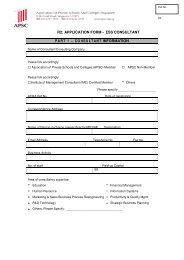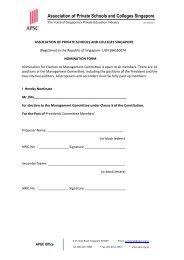A New Dynamic: Private Higher Education
A New Dynamic: Private Higher Education
A New Dynamic: Private Higher Education
- No tags were found...
Create successful ePaper yourself
Turn your PDF publications into a flip-book with our unique Google optimized e-Paper software.
Introduction1time, it is coming under considerable pressure to respond to the financial crisesthrough investment in other sectors. Government funding is simply inadequate tomeet the growth in demand for education at all levels, and thus, non-governmentprovision is expanding.A recent World Bank report (2009) argues that support to policy-makers should beprioritized in times of crisis. This report is aimed at providing guidance to policymakersas they examine the role of private/non-government provision in theirrespective countries. There is no single solution in terms of how governmentresponses might be devised to address such provision, and thus, the authors of thisreport raise issues and put forward examples of how different countries haveattempted to address such issues.Chapter 1 sets out the scope and scale of PHE in 2009, globally. It identifies thegrowth of PHE on a regional basis, estimating that approximately 30 per cent ofglobal higher education enrolments are now in private sector institutions. Asiaand Latin America show the greatest growth ranging up to 80 per cent in somecountries, while Western Europe is the outlier with relatively small shares ofprivate providers. The author sets out a typology of private institutions, describingthe range of operators and owners of higher education institutions (HEIs)globally.Financing private education is a complex issue as there are often many differentstakeholders involved. Chapter 2 provides an overview of the issues, starting with anexploration of the 'collapsing of old boundaries' where public and private provisionblur what might once have been considered as clear funding frameworks. The authorslook at financing mechanisms from the perspectives of the various stakeholdersincluding government, entrepreneurs, philanthropists and students/parents. An indepthanalysis of funding models is not provided in this report; however,consideration of different mechanisms used to support private provision, includingstudent lending, are examined.Public-<strong>Private</strong> Partnerships (PPPs) is an approach which is gaining considerabletraction globally. It has a much longer history in other social sectors such as health,and has grown considerably in the primary and secondary sectors in education. Given3












